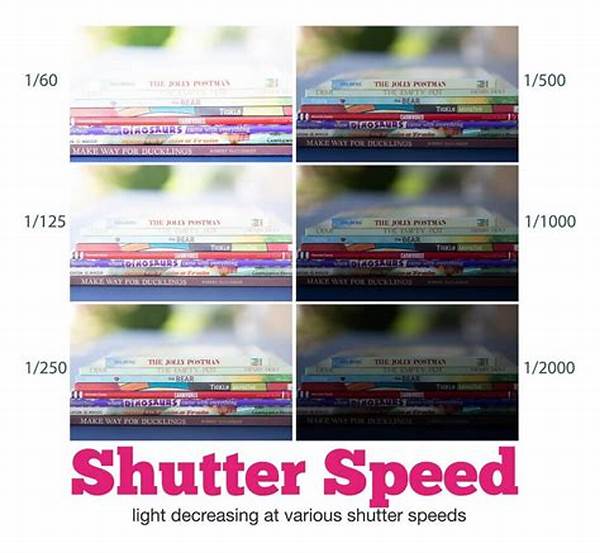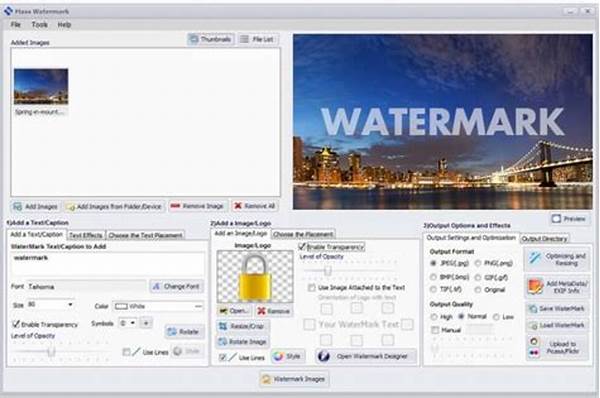Diving into the world of photography can feel like stepping into a massive library with a hundred different aisles. Each section boasts unique stories and skills to learn. If you’re just starting out, the concept of shutter speed settings for beginners might sound like techy jargon. But don’t worry. I’m here to guide you, in plain, understandable terms so you can capture those magical moments.
Read Now : Unified Photo Library Multi-device
Why Shutter Speed Matters
Understanding shutter speed is like discovering the heart of your camera. It’s the gatekeeper that decides how much light enters the camera and captures those beautiful photos. For beginners, getting the hang of shutter speed settings isn’t just about numbers or camera dial spins. It’s about knowing the key to controlling motion in your images. Faster shutter speeds freeze motion, perfect for capturing crisp action shots at a sports event or your dog leaping majestically in the park. On the flip side, slower settings create that dreamy blur that many love in nighttime cityscapes or cascading waterfalls.
When exploring shutter speed settings for beginners, it’s essential to grasp the balance between light and movement. Just like a chef needing the right mix of ingredients, budding photographers need to expressively juggle their shutter rhythms. Don’t worry about getting it perfect right away; photography is as much experimentation as it is skill. So, take your camera for a spin, try out different speeds, and discover which shutter style best captures your snapshots of life.
The more you play around with shutter speed and push beyond auto-mode, the more you unlock creative possibilities. From capturing dramatic motion to serene stillness, shutter speed becomes your artistic paintbrush. Embrace the blurry magic of long exposures or the stark clarity of fast shutter snapshots. At the heart of it all, remember: the world of shutter speed settings for beginners is your playground, so enjoy the journey of discovery!
Quick Tips for Shutter Speed Settings
1. Start with Auto Mode – It’s not cheating! Begin here to understand what shutter speed your camera chooses.
2. Test Fast Shutter Speeds – Try 1/500 or faster for sports or moving subjects.
3. Experiment with Slow Shutter Speeds – Play with 1/15 for creative blur effects.
4. Use a Tripod – For slow speed shots to avoid unintended camera shake.
5. Practice Daily – The real secret is consistent experimentation and learning.
Understanding Light and Motion
Ah, light and motion – the dynamic duo of photography! If you’re diving into shutter speed settings for beginners, you’ll soon discover how these elements are interwoven. Shutter speed is your camera’s way of orchestrating this dance, letting you decide the story you’ll tell. A quicker shutter speed captures the power and energy in a high-speed chase—perfect for those heart-thumping sports shots. Meanwhile, slowing things down invites a touch of mystery and motion, turning a simple street scene into a lively blur of colors and movement.
The beauty of mastering shutter speed lies in its ability to shape your photos entirely. When you understand light and motion, you gain control over the narrative of your photographs. Think of it like being the director of a film, where every scene needs the right timing and rhythm to captivate the audience. Whether you’re telling tales of kinetic energy or serene tranquility, shutter speed becomes the conductor’s baton in your artistry.
While it might seem daunting at first, learning shutter speed settings for beginners is incredibly exciting. Over time, you’ll know exactly when to speed things up or dial them back. You’ll discover the perfect balance that allows you to capture the raw energy of life itself. Trust the process, as there’s magic to be made with every click of your camera’s shutter!
Exploring Creative Outcomes
Playing around with shutter speed settings for beginners really opens up a whole new world of creative possibilities. Whether you’re freezing motion or creating artistic blurs, it’s all a part of this photogenic journey. Let’s explore some of the fantastic creative outcomes you can achieve:
1. Action Freezing – Capture sharp images of moving subjects; perfect for sports and wildlife.
2. Motion Blur – Slow it down for beautifully blurred action, like ocean waves or bustling streets.
3. Light Trails – Long exposures turn car lights into magical streams at night.
4. Silky Waterfalls – A slow shutter turns cascading water into silky softness.
Read Now : Art Of Framing In Visual Media
5. Starlit Skies – Capture star trails with very slow shutter speeds.
6. Ghostly Figures – Create a translucent look with people moving through the frame.
7. Panning – Move the camera with a moving subject for a background blur effect.
8. Painting with Light – Sparklers or flashlights help you draw in mid-air during long exposures.
9. Time-Lapse – Compile slow shutter shots into a dynamic time-lapse sequence.
10. Double Exposure – Blend two shots into one, using varied shutter speeds for artistic flair.
Shutter Speed Adjustments: Practice Makes Perfect
Practicing shutter speed settings for beginners can be likened to riding a bike. At first, those knobs and settings might feel awkward, but with practice, it becomes second nature. Start on a sunny day by capturing clear, vivid stills using fast speeds. As the evening sun sets, experiment with slower settings and see how your images evolve.
Photography is about exploration and finding what sparks joy. So, see every click as an opportunity to learn more. Grab a buddy, head to a vibrant street corner, and try capturing the bustling city life. Or find serenity with nature’s wonder and craft silky waterfalls or dreamy skies. Shutter speed adjustments allow for endless stories and unforgettable imagery.
Whether you’re capturing the innocence of a child at play, the majestic flight of a bird, or the gentle sway of tree branches in the wind, remember that practice is your pathway to mastery. With every failed shot, you get closer to understanding how to wield shutter speed for magic-filled images. The world through a lens is your playground, and the more you play, the more beauty you capture.
Slang Tips on Shutter Speed
Yo, diving into shutter speed settings for beginners? It’s legit the clutch move to step up your photo game. Think of shutter speed as your vibe controller. Need that crisp action shot? Go turbo with faster speeds. But if you’re down for some dreamy flow, slow things down and let that magic happen.
It’s all about the feels—pick a vibe: fast or slow. Wanna flex with some light trails or silky water? Anchor that cam on a tripod my friend, and unleash some artsy shots. Practice is bae here, fam. Don’t sweat the small stuff, just snap away and let your camera be your co-pilot on this rad journey!
The Art of Experimentation
In the realm of photography, there’s a little magic known as shutter speed settings for beginners. It becomes an artist’s brush, allowing the ordinary to transform into something extraordinary. The beauty of this setting is in how it lets you experiment and play with sensations of time and motion. When you’re new to it, think of each shot as a canvas; it doesn’t have to be perfect but filled with potential and hope.
Photography’s true delights are discovered through patience and curiosity. As you practice variations in shutter speed, you’ll find your unique voice in the symphony of images. It’s the freedom to capture life’s variability—from vibrant, frenetic energy to serene timelessness—that keeps the love for photography alive across generations. Embrace these shutter speed settings for beginners as your guide to unraveling your creativity!



